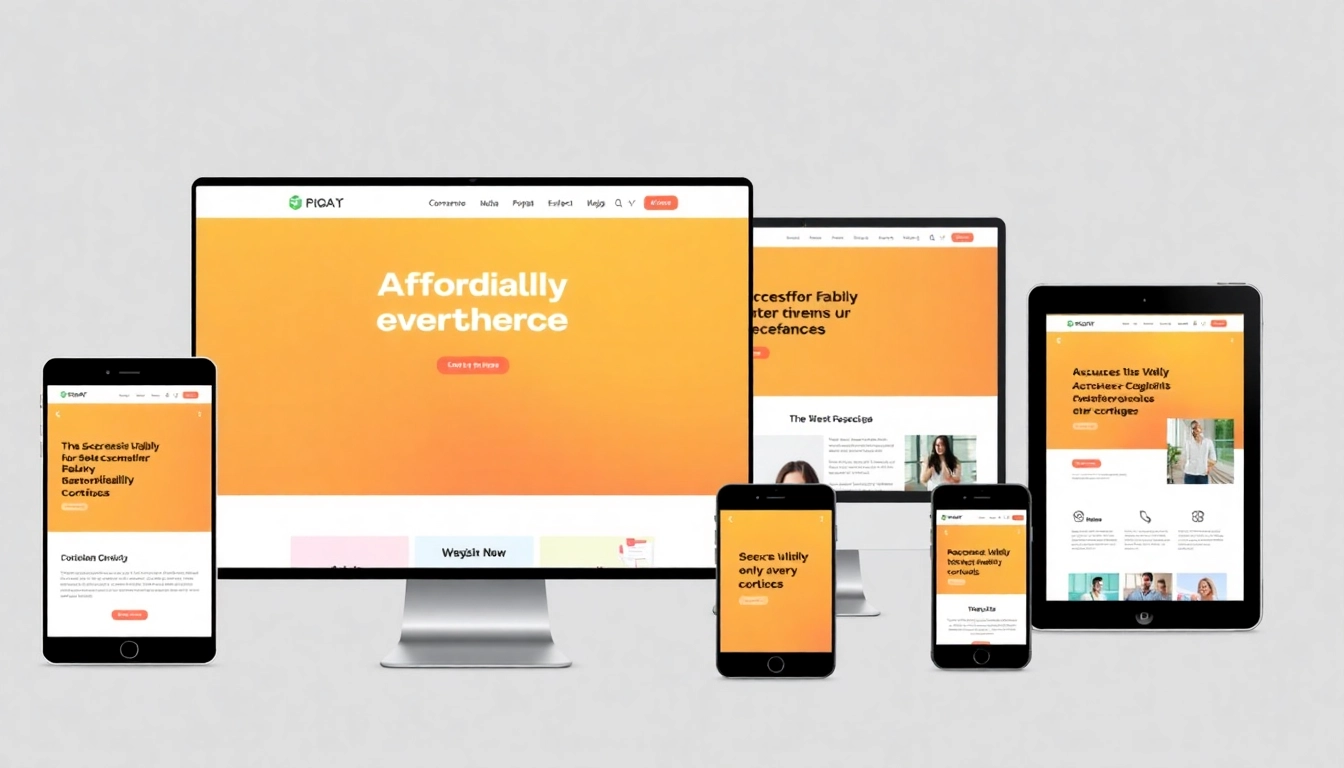Introduction to Cheap and Professional Websites: The Smart Choice in 2024
In today’s hyper-connected digital landscape, establishing an online presence is no longer optional—it’s vital for business success. However, many small entrepreneurs and startups face the challenge of balancing quality with affordability. This is where paginas web baratas become an essential solution. These cost-effective websites, when designed and optimized properly, can serve as powerful tools to attract clients, build credibility, and grow your business without breaking the bank.
Choosing a budget-friendly yet professional website in 2024 has become more accessible due to advancements in web development tools, hosting options, and design platforms. The key is to understand how to leverage these resources efficiently, ensuring your website not only remains economical but also meets standards of quality, usability, and SEO performance. This article explores how to create, optimize, and maximize the impact of inexpensive websites, helping entrepreneurs make informed decisions that yield real results.
Why Opt for Cheap Websites in 2024?
1. Cost-Effectiveness without Sacrificing Quality
The primary advantage of opting for affordable websites is maximizing your budget. Modern tools and templates allow the creation of visually appealing and functional sites at a fraction of traditional costs. For instance, a complete website can be built for as little as €350 + VAT, providing a professional look suitable for small businesses. Such investments offer excellent ROI, especially when compared to the expenses associated with alternative advertising channels or traditional brick-and-mortar setups.
2. Rapid Deployment and Flexibility
Economical web solutions typically involve quick setup times. Platforms like WordPress, Wix, and similar builders streamline the process, which is perfect for entrepreneurs eager to start their online journey swiftly. Additionally, scalability is a core feature—start with a simple static site and expand functionalities as your business grows, ensuring your investment remains relevant and effective over time.
3. Competitive Advantage in Local and Niche Markets
For many small companies, a well-designed website—even if inexpensive—can be the decisive factor that sets them apart from competitors who lack an online presence. With nearly 80% of consumers researching online before purchase, a digital footprint can be achieved economically yet professionally, allowing your business to reach broader audiences without extensive marketing budgets.
Creating a High-Quality, Budget-Friendly Website
1. Choosing the Right Platform & Builders
Modern website creation platforms like WordPress and Webflow offer economical options for developing websites that are both attractive and functional. These tools provide ready-made themes and plugins that reduce design time and costs. For example, using a responsive template ensures compatibility across devices, which is crucial in today’s mobile-centric environment.
Additionally, website builders such as Wix and SITE123 provide intuitive drag-and-drop interfaces, enabling even non-technical users to build professional sites at minimal costs. When selecting a platform, consider factors like ease of use, scalability, and available features for SEO and security.
2. Responsive & Adaptive Design for All Devices
Design responsiveness is no longer optional—it’s a necessity. A site that adapts seamlessly to desktops, tablets, and smartphones not only enhances user experience but also improves SEO rankings. Modern frameworks like Bootstrap or Tailwind CSS facilitate designing websites that are mobile-first and highly adaptable without additional costs, ensuring visitors stay engaged regardless of their device.
3. Creating Content & Optimizing for SEO
Content remains king in digital marketing. Even on budget sites, relevant and well-structured content can boost visibility. Focus on concise, keyword-rich headlines and descriptions that align with your target audience’s search intent. Incorporate keywords naturally, avoid keyword stuffing, and ensure each page provides valuable information.
For easy management and optimization, tools like Yoast SEO (for WordPress) assist in refining titles, meta descriptions, and readability scores. Moreover, high-quality images and videos improve engagement and dwell-time, contributing positively to SEO.
Effective Strategies for SEO Optimization of Cheap Websites
1. On-Page SEO Best Practices
Implementing on-page SEO involves structuring your website correctly. Use descriptive titles, header tags (H1-H6), and optimized URLs. Internal linking between pages helps distribute page authority and encourages visitors to explore more content, while fast-loading pages improve user experience and rankings.
2. Keyword Integration & Meta Descriptions
Effective use of keywords like “paginas web baratas” throughout your content, titles, and meta descriptions boosts your site’s relevance in search engine results pages (SERPs). Research keywords with tools like Google Keyword Planner to identify high-volume, low-competition terms for better opportunities.
3. Monitoring & Continuous Improvement
Regularly analyze your website’s performance with Google Analytics and Search Console. Track key metrics such as organic traffic, bounce rate, and conversions. Based on the insights, make data-driven adjustments—improving content, refining keywords, or enhancing site speed to push your rankings higher.
Maximizing Your Investment: Pricing & Service Packages
1. Comparing Cost & Included Services
Basic packages like a single-page site can start at €150, offering a sleek, responsive design with SEO basics. Fully developed websites cost around €350, including content optimization, mobile responsiveness, and appealing aesthetics. Additional services such as domain registration, hosting, and ongoing maintenance typically entail manageable monthly fees (€20–€100), making budget management straightforward.
2. Customization & Scalability
Economical solutions are not one-size-fits-all. Tailored packages allow adding features like e-commerce functionality, booking systems, or custom branding as your business expands. Scalability ensures your website evolves with your needs, preventing costly redesigns or migrations later.
3. Extra Services & Support
Many providers bundle hosting, domain, and SSL certificates into attractive packages. Consider ongoing support, security audits, and content updates as part of your investment. A proactive approach guarantees your website remains secure, fast, and optimized for search engines over time.
Success Stories & Best Practices for Small Business Websites
1. Real-World Examples
Case studies demonstrate how small businesses have achieved remarkable results with affordable websites. For instance, a local boutique launched a single-page site costing €150, resulting in a 35% increase in local inquiries within three months due to optimized local SEO and responsive design.
2. Measuring Effectiveness
Key performance indicators include website traffic, bounce rate, lead conversions, and search engine rankings. Use tools like Google Analytics to monitor these metrics, and set realistic goals such as achieving page one rankings for your primary keywords within six months.
3. Ongoing Maintenance & Updates
Keeping your site fresh with updated content, periodic technical audits, and SEO refinements is essential for sustained success. Training on content management systems or hiring support services can help keep your website competitive without significant expenditure.



